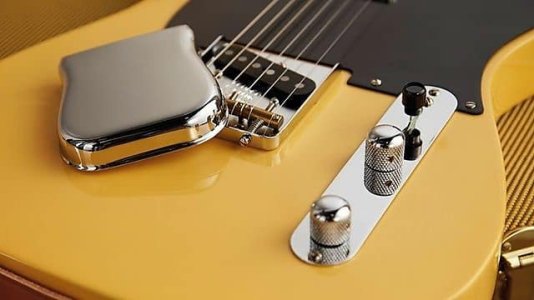The Esquire used an adapted lap steel pickup that was already in existence. It was covered in the lap steel, and it was covered in the Esquire.
It was prototyped, sent out for trials with [mostly Western swing and country] musicians, and exhibited at NAMM in 1950.
Feedback from musicians and from their marketing "guru" was that it should have a neck pickup as well.
You can bet that they thought about using the same pickup in the neck spot, and probably even tried it.
It most probably either didn't sound good, or didn't look good there (too big, and uncovered). The neck pickup was developed (with an attractive size and an attractive cover) and placed in Esquires, some still in the pre-production phase.
During this prototyping and trial period, it was also decided that the guitars should use a thicker body, a translucent finish with a figured wood (blonde over ash instead of black over pine), and a truss rod.
All of this is before the Broadcaster. The Esquire was the first Fender guitar, and it came in both single and dual pickup versions, and pre-production and production versions, the latter very close to the same thing as the Broadcaster. So when someone asks you what's the name of the first production Fender guitar that had the "Telecaster shape," and two pickups, the answer is the Esquire – not the Broadcaster.
A name change came after all the specs tweaks; the Esquire name was dropped entirely, in favor of "Broadcaster." The next year (1951), the Esquire name was resurrected, for the single pickup variant. It not only provided a budget alternative to the Broadcaster/nocaster/Telecaster, but was also a sonic complement to it, allowing a tone control to be used on the bridge pickup (something not available on the two pickup guitars), and the dark tone (forward switch position) to have more definition than on the two pickup guitars.
At any rate, the neck pickup was something that was arrived at via real-world musician trials, and, you can be sure, some tinkering and messing around by Leo and his friends. It was designed to be a warm pickup, played cleanly, for what we'd now consider extremely square and extremely "white" forms of music. Its inclusion gave the Broadcaster/nocaster/Telecaster a wide tonal range from very dark to very bright. It made sense for what the guitar was made for.
And, very importantly to understand, the Telecaster wiring was designed around the neck pickup being your "home base," with the bridge pickup being there only to occassionally provide maximum treble, and nothing else. On an original Tele (up to '67), you have neck pickup bass tone, neck pickup with the whole sweep of the tone knob (full treble to totally muffled), or bridge pickup with no tone control – full brashness and nothing less. People playing rock-n-roll complain about it because they usually use the bridge pickup or the modern middle position as their "home base"...instead of using the bridge pickup as the outlier, as the wiring was designed for. When you set your amp up around the bridge pickup, then of course the neck pickup sounds muddy. But if you learn to use the neck pickup as your home base, then the neck pickup sounds brilliant.
I have no problem making all kind and manner of noise, clean to dirty, polite to rude, and square to hip, with a totally stock '50s style Tele. Most of what anyone needs is a few knob turns or switch flicks away.

